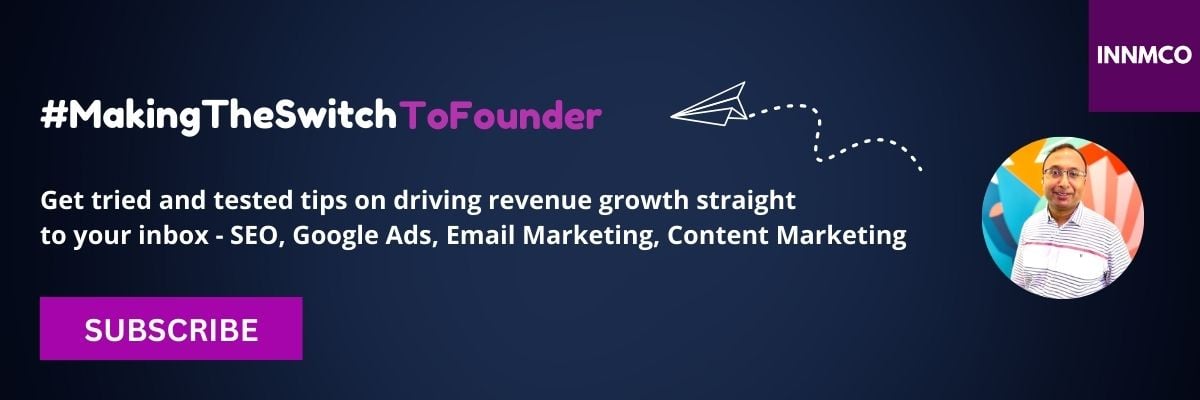You have an online business idea (e.g. online course, online store, software, professional services). You are exploring a product market fit.
Your have registered a business. You have a business plan in place.
You are looking forward to promote your products or services.
We explore 8 ways you can find success while starting an online business.
Table of Contents
1. Create a digital marketing strategy
4. Generate an inbound interest
5. Utilise marketing and sales tools
6. Unified view of the customer
7. Enhance customer experience
1. Win customers online with a digital marketing strategy
A digital marketing strategy is a plan for achieving specific goals using online channels.

2. Build an online presence
Promoting your business online helps in positioning your products or services with your target audience at places where they frequent. Promoting your business online helps you reach your target market at scale. Your brand is front of mind when your customer is researching solutions or at the decision stage.
Promote your business online by building your website. Create a web design that appeals to your target market. Be found in search by optimising your web pages with the target keywords used by your target market during search.
Create a content marketing strategy and create a social media marketing plan to reach your target audience. Establish a customer database to organise your leads and build your email list to engage your customers.
Create lead magnets and offer useful information in exchange for details like email address. Monitor how each digital marketing channel is performing against your stated marketing goals.
![]()
3. Build brand awareness

4. Generate an inbound interest and capture leads
Create a content marketing strategy. Provide useful information to your ideal customer at various stages of their buying journey with your organisation. It’s important to have a good understanding of your target market needs and what their buying journey looks like.
Find ways to provide useful information in exchange for an email address or any other information that your require. Publish relevant content articles via social media platforms.
A higher purchase intent will prompt customers to leave their email address in exchange for information to address their needs. This will enable you to nurture a lead by further understand their needs and goals.

5. Utilise enabling tools for marketing and sales
Back end marketing systems and processes will help with marketing activities like lead capture, conversion rates and email campaigns. Sales tools will help with sales activities like sales forecasting, tracking opportunities and deals and managing the customer lifecycle in CRM.
Marketing and sales software will help you build an infrastructure to promote your products while setting up a successful online business. Sales and marketing tools can be used to maintain buyer personas, organise leads and segment your leads. This is applicable for all type of businesses.
Example - If you are the owner of an ecommerce business and you have products to sell online. Email marketing tools will help you to send relevant information (e.g. new products, latest offers) via email newsletters to your customer base or prospective customers. Sales and marketing tools will help you in automating repeatable marketing tasks like email sequences to contacts in your CRM.

There are challenges associated with managing multiple marketing and sales tools. In this blog post, I explain why I prefer using an integrated sales and martech stack to power my sales and marketing needs.
6. Create a unified view of the customer
It is important that information does not stay in organisation siloes. We have all experienced this at some point in our careers and it can be really frustrating. This is because there is no smooth flow of information between the different teams (e.g. between marketing, sales and service teams).
This will result in lost sales opportunities due to information being lost in transit between marketing and sales teams. You will not be able to nurture leads via email marketing. Your customer service teams will not have access to a complete customer information while addressing customer issues.

One of the advantages of using an integrated sales and martech stack is to reduce occurrences of information siloes. In this blog post, I articulate the challenges that I faced while using multiple sales and marketing tools.
7. Enhance customer experience
Customers also need to feel that they are being heard and helped at various stages of their buying journey. Guide your customers who arrive at the web store front by providing useful information that address their needs.
A poor customer experience could result in a lost sale. This could have been avoided by providing answers to a query that they may have.
If they get stuck or need more information about something (e.g. product feature or price), appropriate mechanisms need to be in place for addressing their queries (e.g. live chat, ask a question, FAQs etc.).

In this blog post, I explain the importance of understanding your customer needs (use persona templates) and creating a unique value proposition that sets you apart from competitors. I also discuss the importance of organisation values. How an organisation’s values drive their business culture and business structure.
A good business model enables an organisation to create customer value and capture organisation value. A few examples of business models include Software as a Service (SaaS), affiliate marketing etc. Ask yourself the following questions.
Can any traditional factor that the industry competes on be reduced, eliminated, created or amplified? Can any industry assumption be inverted on its head? The answers to these questions will help you to invest in areas that are deemed more important than others.

Conclusion
Starting a business is really exciting! Create a digital marketing strategy to promote your business online. Make your target audience aware of your offering by increasing brand awareness. Utilise enabling marketing and sales systems to help you achieve your marketing goals (e.g. generate leads).
Create a unified view of the customer to enhance customer experience. Create a business model to create customer value and capture organisation value. All this increases your chances of success while setting up an online business.
Grow web traffic, leads & sales!
Written by Anees Misbahudeen
Founder & Digital Marketing Director, INNMCO
.png?width=200&height=125&name=Anees%20Misbahudeen%20-%20Company%20Profile%20(700%20%C3%97%20436%20px).png)
I help businesses grow web traffic, leads & sales. I am a digital marketing director specialising in SEO, Google Ads, email marketing & content marketing campaigns. I've supported the growth story of 30+ brands in software, financial services, automotive, manufacturing & B2B. I’ve 10+ years of digital marketing industry experience, as a founder, digital marketing strategist & consultant.
Subscribe to my monthly newsletter #MakingTheSwitchToFounder
.png?width=75&height=75&name=INNMCO%20Company%20Logo%20-%202025%20(700%20x%20700%20px).png)

.png)



